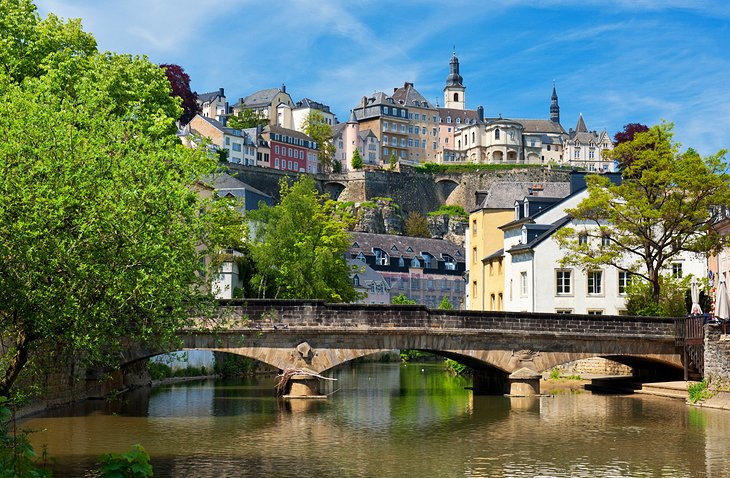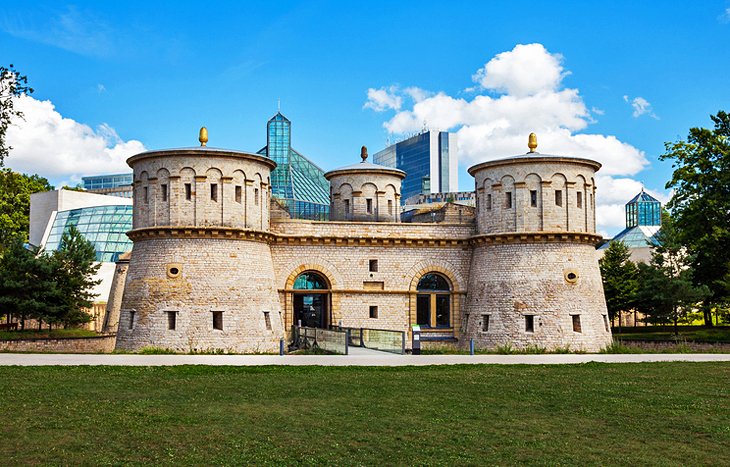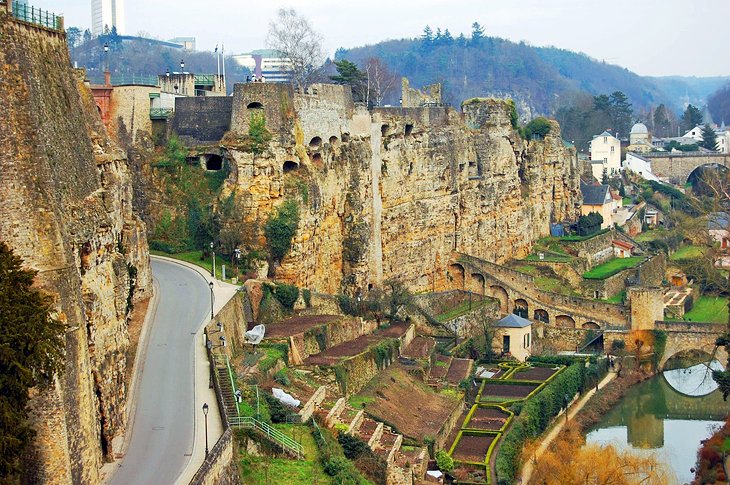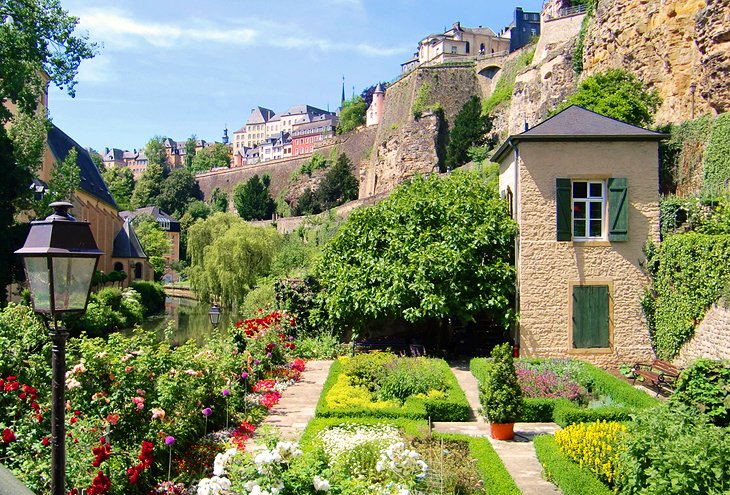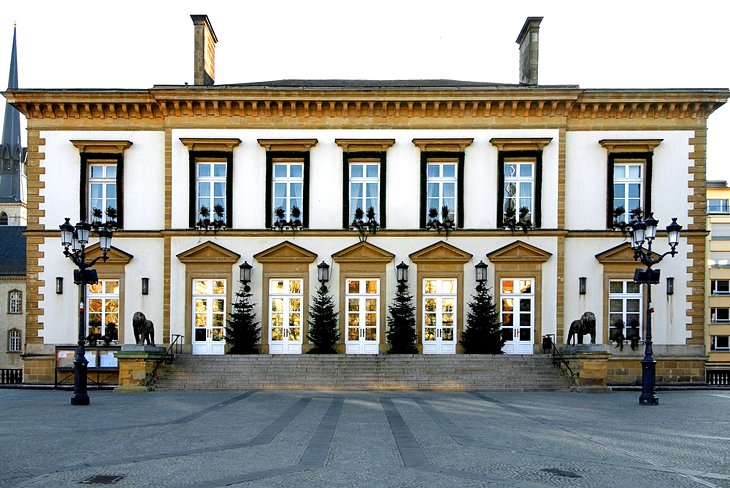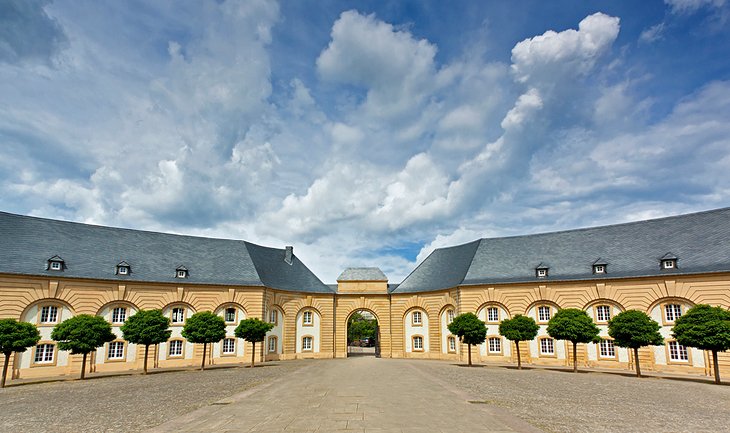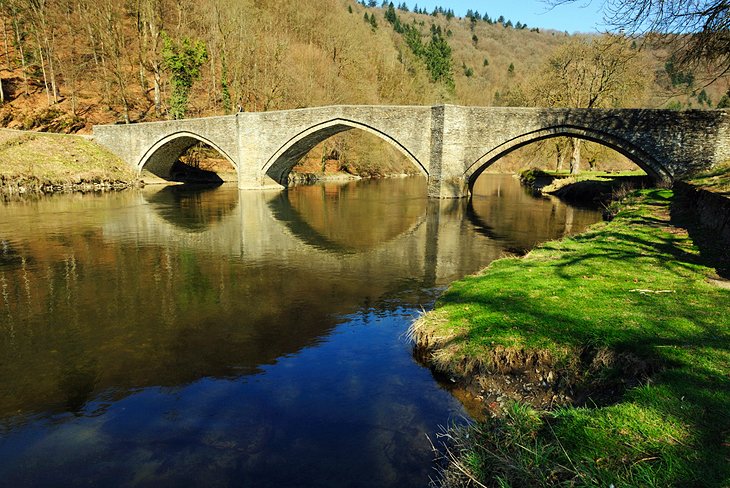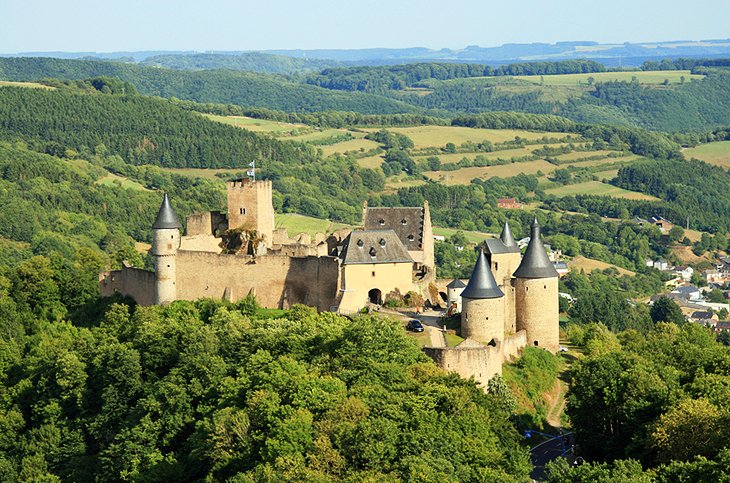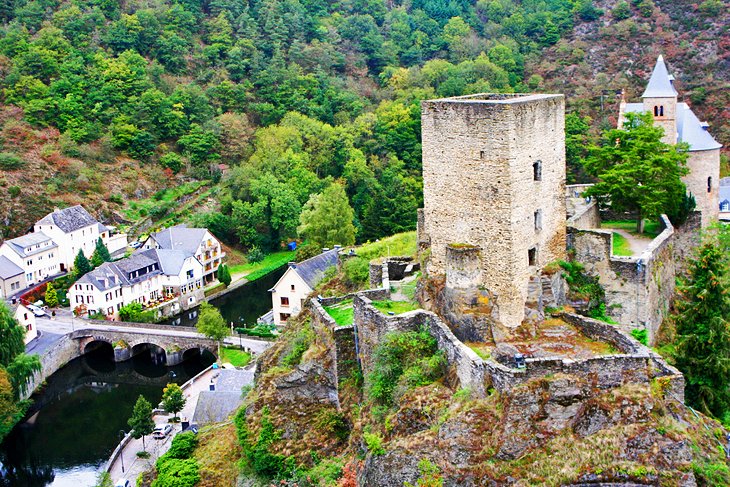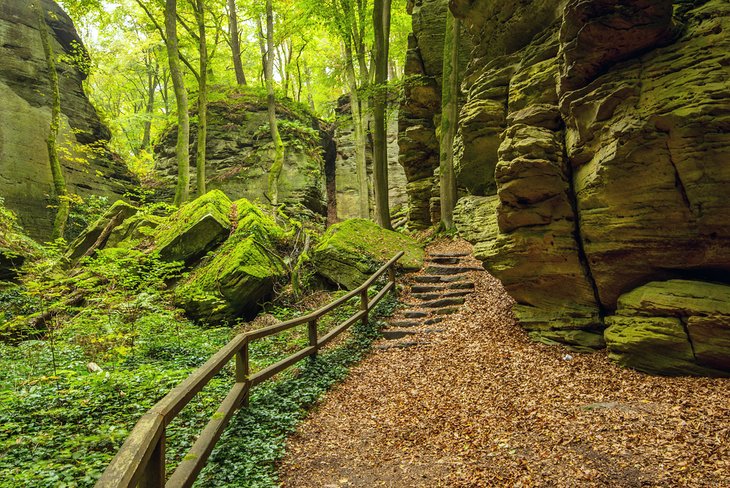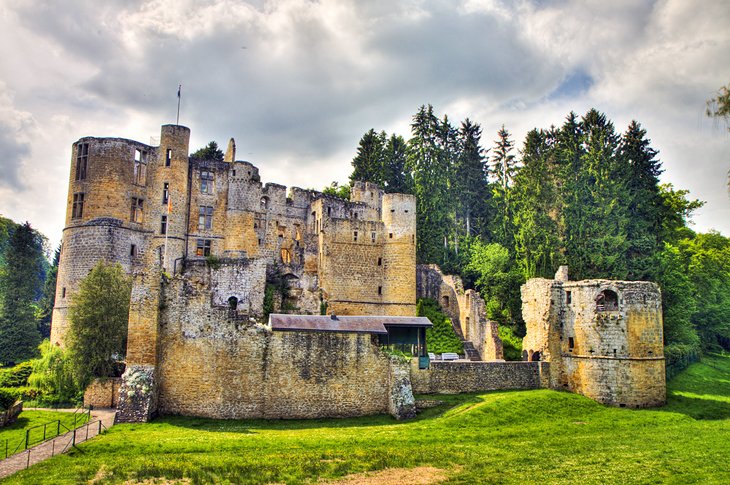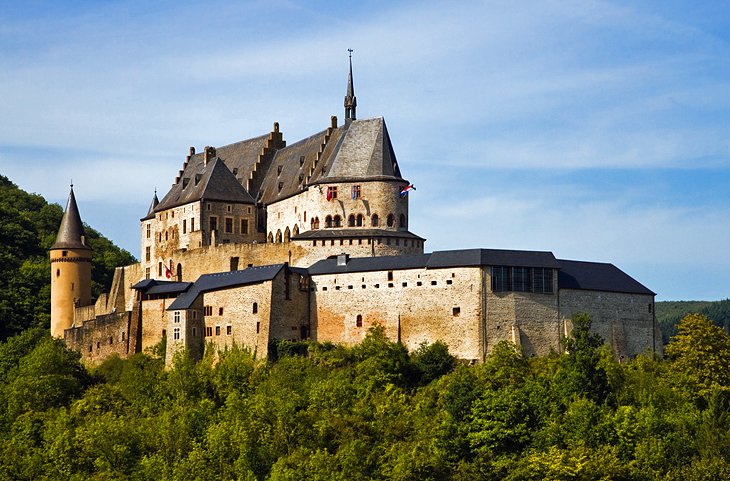Wednesday 10 August 2016
ADEKS TRAVELS AND TOURS: GET YOUR VISA, VISIT SOUTH AFRICA... ITS AN EXCITI...
ADEKS TRAVELS AND TOURS: GET YOUR VISA, VISIT SOUTH AFRICA... ITS AN EXCITI...: CAPE TOWN The beautiful beaches in Cape Town contribute to the Mother City’s worldwide acclaim. From the trendy shores of Clifton and...
GET YOUR VISA, VISIT SOUTH AFRICA... ITS AN EXCITING PLACE TO BE!!!
On Cape Town’s Atlantic seaboard, wide sandy stretches, dramatic views and blazing sunsets make up for the bracing sea temperatures that these beaches of Cape Town are known for. While the water might be chilly, Clifton’s 4 beaches are among Cape Town’s most popular, attracting a trendier set that like to sunbathe, play volleyball and hang out with friends.
Nearby Camps Bay beach is a Cape Town weekend favourite, edged by trendy eateries and characterised by large crowds. A little further on you’ll find Llandudno, a surfers’ paradise rimmed by some of the city’s most expensive real estate, and Sandy Bay, where not even a swimming costume is required.
The warmer Indian Ocean waters of the False Bay seaboard are better suited to swimming. Best known among these beaches is Muizenberg, where multi-coloured Victorian-style beach boxes hark back to a more genteel time.
There are some good Cape Town beaches in nearby Simonstown, one of the oldest Cape settlements with a strong naval tradition, reflected in the number of naval museums and monuments in the town.
When the wind is up at the beaches in Cape Town, people head to Boulders Beach, which is sheltered by large, rounded rocks and is home to a protected colony of African penguins.
Gauteng South Africa is the commercial powerhouse of the country. But its offerings are not limited to commerce and industry, Gauteng's tourism contribution is equally impressive, with Johannesburg, Pretoria, Soweto, Cullinan and Magaliesburg all ranking as top Gauteng attractions.
Anchored by the historical cities of Johannesburg and Pretoria, Gauteng provides plenty in the way of shopping and entertainment through its network of malls, casinos, flea markets and suburban stores.
Both cities house a number of museums, including the Hector Pieterson Museum, Apartheid Museum, Constitution Hill, Museum of Military History, Pretoria Art Museum and the Museum Africa.
Johannesburg and Pretoria are also home to several theatres and playhouses, offering authentic South African musical performances, drama, ballet and side-splitting local comedies.
Soweto is a very popular Gauteng destination. This is largely due to the pivotal role it played in South Africa's struggle for freedom but also, because of the unique cultural experiences it offers. Adventure tourism is also taking off and visitors can bungee jump and swing in and outside of Soweto's iconic Orlando Towers.
On the outskirts of these bustling metropoles, the cityscapes give way to Highveld grasslands that stretch out to the province's borders.
In Johannesburg, this extends south to the Sedibeng region and the watersports mecca of the Vaal River, and west towards the popular Cradle of Humankind, Sterkfontein Caves and the charming country village of Magaliesburg.
At Pretoria, it extends north into the Dinokeng tourism region, which is home to the quaint mining town of Cullinan with its diamond history, and rolling savannahs that feature a number of game reserves.
Aside from township tours, visitors to Gauteng can also delight in other cultural experiences, which include visits to the Credo Mutwa Cultural Village in Soweto, Heia Safari Ranch in Muldersdrift and the Zuluka Tribal Village just outside Pretoria.
Shopping is a must, with many excellent curio shops to be found at Sandton City, Rosebank Mall and Nelson Mandela Square - where you'll also find the enormous statue of Nelson Mandela - great for photographs and lunch.
CONTACT US and you will be glad you did! >>>>>>>>> 07067812769 >>>>>>>> 24E6ED0B
EXPLORE EUROPE, LETS GET A SCHENGEN VISA FOR YOU!
CONTACT US: BBM: 24E6ED0B
WHATSAPP/CALL/SMS: 07067812769
LUXEMBOURG
WHATSAPP/CALL/SMS: 07067812769
LUXEMBOURG
Although a small country - it covers less than 1,650 square kilometers and has a population of a little more than 500,000 - Luxembourg (or in full, the Grand Duchy of Luxembourg) delivers considerable diversity. While many of the country's major attractions lie in vibrant Luxembourg City, the old quarter of which has been designated a UNESCO World Heritage Site, Luxembourg's many small towns are lovely. It's also an easy country to travel around, whether on foot in the capital city, on a driving tour through the picturesque countryside, or town-hopping by train. Old fortresses and beautiful castles compliment the scene, making it a popular tourist destination that is frequently visited in combination with surrounding countries such as Belgium and the Netherlands.
16 TOP RATED TOURIST ATTRACTIONS IN LUXEMBOURG
1 Editor's PickThe Old Quarter, Luxembourg City
There's no better place to begin exploring beautiful Luxembourg City than in its historic Old Quarter. Designated a UNESCO World Heritage Site in 1994, the city's ancient fortifications made it one of the most important of Europe's cities. The fortress was so impregnable it was dubbed the "Gibraltar of the North," and although the original fortress was dismantled between 1867-1883, its impact upon the Old Quarter is evident everywhere. Today, the old fortifications have given way to beautifully laid out parks and gardens, while it's cobbled streets are lined with charming old homes and buildings. It's a great place to spend a few hours exploring as you cross its many bridges and traverse its many alleyways, preferably without a map - just follow your nose and see where you end up!
Accommodation: Where to Stay in Luxembourg City - TripAdvisor.com
2 National Museum of History and Art, Luxembourg City
If you were to judge Luxembourg City on the quality of its museums - never mind its status as one of Europe's most historically important cities - it would still rank extremely high on the list of the continent's must-see cities. Topping the list is the National Museum of History and Art. In the historic Fish Market area (the old town center), the MNHA collections - art objects, archeological finds, furniture, tools, coins, arms, and documents dealing with the history of the country - are housed in a stunning new building. There's a particular emphasis on the Gallo-Roman period and displays illustrating the artistic, social, religious, and intellectual life of Luxembourgers from the 16th to the early 20th centuries. The contemporary art section is also a must-see, and is furnished with works by many of the most important artists of the 20th century. Fans of modern art (and ultra-modern architecture) must visit the superb Mudam Luxembourg-Musée d'Art Moderne Grand-Duc Jean with its collections from world renowned artists. Also worthy of a visit is the Contemporary Art Gallery (Am Tunnel) with its first rate collection of visual arts.
Address: Marché-Aux-Poissons, 2345 Luxembourg City
3 The Bock and the City Casements, Luxembourg City
Luxembourg's Bock cliff, with its fortifications and cannon-loopholes, is where you'll find the entrance to the famous Casemates, a 21-kilometer network of underground passages hewn from solid rock. Capable of sheltering thousands of defenders as well as equipment, horses, workshops, kitchens, and slaughterhouses, the Casements cover an impressive 40,000 square meters. Today, much of these remarkable fortifications can be explored on foot. On the Bock plateau itself are the remains of the old castle, discovered in 1963. There are beautiful views of the suburb of Grund and the Rham Plateau, the old 19th-century barracks, and the big towers and remains of the Wenceslas wall dating from 1390.
4 The Walls of the Corniche, Luxembourg City
The spectacular Walls of the Corniche in Luxembourg City have been called "the most beautiful balcony in Europe," towering as they do over the old city in the river valley below. It's here, you'll find the big Gate of the Grund dating from 1632. Its ramparts reveal several aristocratic houses and refuges, as well as the ancient convent of the Dominicans and St. Michael's church (AD 987). In the suburb of Grund itself is a large cluster of buildings with the church and ancient Abbey of Neumünster with a 17th-century cloister of Limoges, an organ dating from 1720, and a 14th-century "black virgin." The adjacent buildings are part of the ancient Hospice St.-Jean, founded by Emperor Henri VII, Count of Luxembourg, in 1309.
5 Place Guillaume II, Luxembourg City
Luxembourg's Place Guillaume, one of the city's largest open spaces, is the former site of a Franciscan convent that has since been converted into a pedestrian zone. In the center is the equestrian statue of William II, King of Holland and Grand Duke of Luxembourg. It's also where you'll find the lovely Town Hall and the famous Trémont's lions. Nearby is the 16th-century House of Raville with its beautiful façade, well-restored balcony, and spiral staircase. Other notable landmarks are the Spanish Turret with its superb views of the Pfaffenthal suburb and the old cavalry-barracks of Vauban, dominated by the Three Acorns, the former forts of Upper and Lower Grünewald, Olizy and Thungen. Another landmark close by is the Grand-Ducal Palace, a gorgeous Renaissance building dating from 1572, which is open for tours throughout the summer months.
6 Echternach and its Benedictine Abbey
The beautiful town of Echternach lies on the bank of the River Sûre, which forms the border with Germany. The Mullerthal and Germano-Luxembourg natural park are nearby, and the surrounding woods are crisscrossed with hundreds of footpaths leading to spectacular rock formations, waterfalls, and viewpoints. The town itself is well known for its centuries-old dancing procession, which takes place on Whit Tuesday and attracts visitors from around the world. The old aristocratic houses, narrow streets, and ancient ramparts have helped Echternach maintain its medieval appearance. A must-see is the seventh-century Benedictine Abbey and its superb museum, its four long wings built around a large square courtyard. The Basilica, considered the most important religious building in the country, is home to a crypt with a magnificent white marble sarcophagus containing the remains of St. Willibrord, the founder of the abbey, and its vaults are painted with frescoes dating back to the 10th century. Echternach is also famous for its international music festival, which runs from late May to late June.
7 The Luxembourg Ardennes
Standing in stark contrast to the rather flat landscape around Luxembourg City, the Ardennes is where you'll find high forested plateaus, sheer cliffs, wooded hills, and hidden valleys, as well as countless impressive views. The area - famous as the place where Hitler staged his last great campaign of WWII - boasts numerous castles, fortresses, and fortified farms rising out of the hilltops. One of the prettiest towns,Wiltz, consists of an upper and lower town and is famous for its open-air theater and music festival. There's also a Battle of the Bulge Museum in Wiltz Castle (another WWII-themed museum of note in the Ardennes is the Patton Museum and monument in Ettelbruck). The quaint village of Clervaux is also worth checking out. While the village lies amid a deep and narrow valley beside the river Clerve, its Benedictine Abbey of St. Maurice and St. Maur, built in 1910 in Romanesque-Burgundian style, dominates the valley. Visitors here can enjoy exhibits relating to the monastic life as well as Gregorian masses.
8 Bourscheid Castle
The village of Bourscheid stands high on a plateau and is bordered by the rivers Sûre and Wark. Here, you'll find excellent views and many pleasant walks to other quaint villages, including Michelau in the Sûre Valley, Welscheid in the Wark Valley, and Kehmen on the plateau. For bathers, there are two river beaches at Bourscheid-Plage and Dirbach. This region of the Ardennes is very much dominated by the ruins of the fairy-tale Bourscheid Castle, which looks down from a rocky peak 137 meters above the Sûre. Dating from the 10th century, the castle has been largely restored and is accessible to visitors (self-guided audio tours are available, with guided tours available upon request). If you can manage it, try to view the castle at night when it's lit up - a truly memorable experience, particularly from the village.
Address: 1 Schlasswee, L-9140 Bourscheid, Luxembourg
9 Mondorf-les-Bains and the Moselle
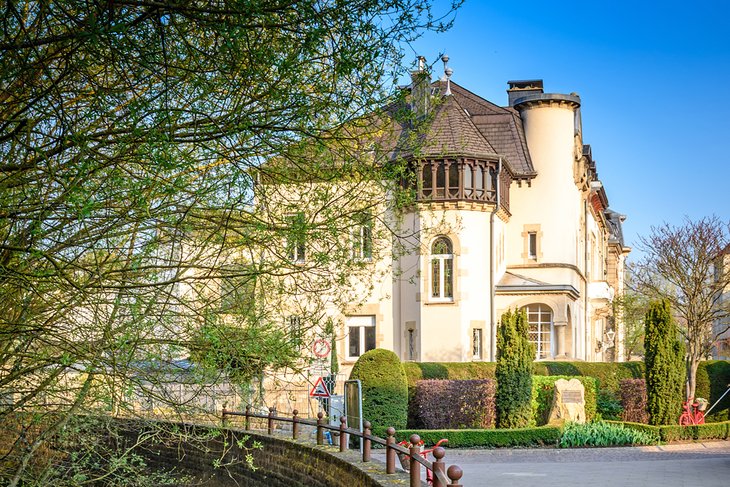
The Moselle region of Luxembourg occupies much of the eastern part of the country and features slopes flanking the majestic Moselle River. The many picturesque villages tucked along the banks of the Moselle recall an ancient charm and are fun to explore. They are renowned for their varied cuisine produced from locally-grown products. It was also an area much favored by the Romans, and as a result many archaeological remains can be found dispersed throughout the region. One must-visit town is Mondorf-les-Bains, a small town famous around the world for its thermal springs. One of the newest attractions here is Mondorf le Domaine Thermal, a large spa complex that houses a health center, sports and leisure club, and hotel. The complex's thermal installations are fed by springs supplying a mineral water of 24°C that is famous for its medicinal qualities. Afterwards, stroll through Mondorf Park with its large collection of trees, shrubs, and flowerbeds. Other highlights include 18th-century St. Michael's Church with its furniture and frescoes; the Castel, a little Roman fortress transformed into a hermitage during the Middle Ages; and the Art Nouveau houses.
10 Upper Sûre Natural Park and Esch-sur-Sûre
Upper Sûre Natural Park consists of plateaus, narrow valleys with wooded slopes, and the lake of the Upper Sûre dam. The park is great for leisure activities and watersports, as well as for its wildlife and ecotourism. Numerous walking tours - whether guided or self-guided - include everything from pleasant circular tours to more arduous treks around the lake. A fun sculpture trail has also been added, as have excellent solar-powered boat tours across the large reservoir. Other activities include fishing, swimming, sailing, and diving. The area also possesses a rich cultural heritage, and the Nature Park Centre in a disused cloth mill includes a museum with interesting artifacts and exhibits relating to both the park and the local area. A number of events also take place here, the largest being the biennial Water-Art Festival, an event that attracts more than 200 musicians under a theme of "Rock meets Classic." A must-visit nearby is Esch-sur-Sûre, a spectacular small village set in the mountains and skirted by the river Sûre and widely regarded as one of the most outstanding sites in the country. The village is dominated by its ruined manor house, built in AD 927 (open year round, free admission) and by the cliffs looking down to the river.
Address: Nature Park Centre, 15, Rue de Lultzhausen L-9650 Esch-sur-Sûre
Official site: www.naturpark-sure.lu/index.php?id=1;lang=en
11 Walferdange and its Castle
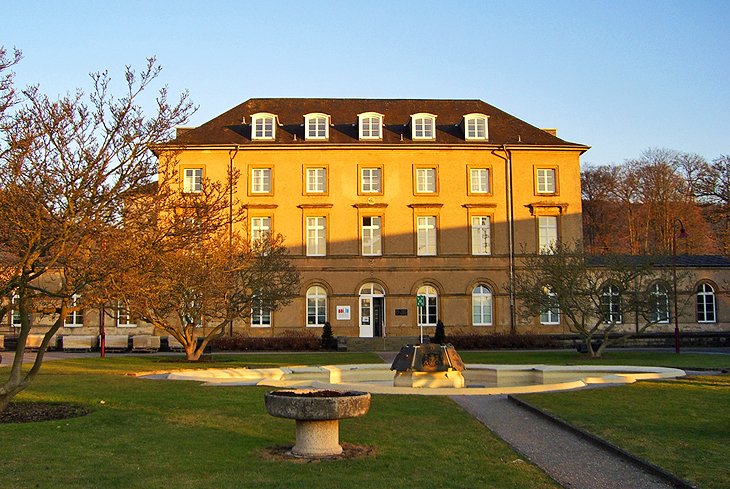
Walferdange Castle, the Grand Ducal residence until the end of the 19th century, lies at the entrance to the Grunewald Wood on one of Luxembourg's principal tourist routes and is just a short distance from Luxembourg City (it's now a part of the University of Luxembourg). The village of Walferdange boasts picturesque scenery due to its location at the junction of the Alzette Valley with its lovely wooded heights. In addition to its great views, the village is well known for its roses as well as a large archeological site that includes a Roman villa and an underground aqueduct.
12 Larochette
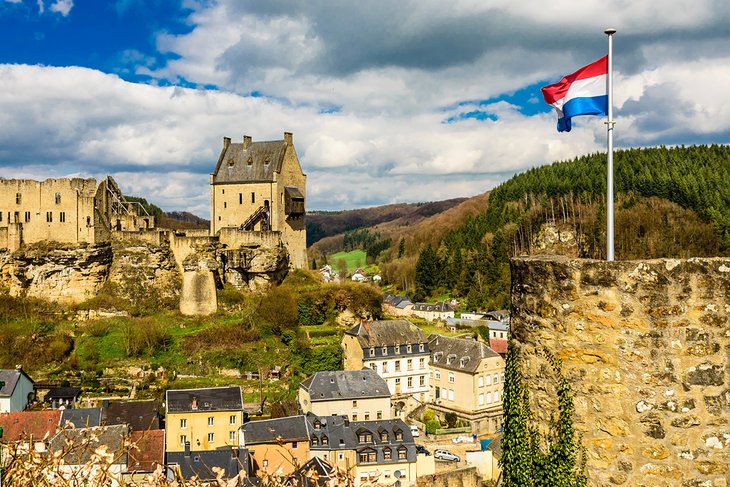
Larochette is a quaint old market town that lies in a narrow, rocky valley surrounded by woods. The town is dominated by two old and partially rebuilt castles that stand on a crag high above the valley of the White Ernz. Larochette boasts a superb medieval square, a museum of industry (free admission; open year round), and a number of historical monuments dotted along its many old streets. Be sure to pop into the Neo-Roman church for its Art Nouveau frescoes. The village is a hiker's haven, with walks for all abilities heading through the woods and countryside and leading to notable viewpoints such as the castles of Meysembourg and Nommerlayen, with the remains of a Roman camp at Aalburg.
13 Berdorf
Berdorf is one of the main tourist areas in the Grand Duchy of Luxembourg and lies on a vast tableland overlooking the valleys of the Black Ernz, the Sûre, and the Aesbach rivers. Numerous well-kept footpaths crisscross the valleys and chasms, where you'll find tall rocky hills with fine views and more than 3,000 acres of forest. It's also a tremendously popular area for rock climbers.
14 Beaufort Castle
Beaufort lies on a plateau in the Mullerthal region, and is well known for its near perfectly dimensioned 12th-century castle, as well as a Neo-Gothic church. Although much of the castle is uninhabitable, it is still wonderful to explore. A number of footpaths lead through the wooded hills to great views of the surrounding countryside, through spectacular rock formations, and the gorges of the Hallerbach and the Saueracht, towards Grundhof and Dillingen in the Sûre valley.
15 Vianden
Vianden is an extremely picturesque town straddling both banks of the River Our. Its fine feudal manor dates back to the ninth century and is unrivaled in the Ardennes and Eifel for its architectural significance. Also of note is the medieval outer wallencircling the town with many impressive guard towers. The parish church with its two naves was built in Gothic style in 1248 and has been completely restored. The former Trinitarian cloister, dating from 1250, houses a lapidary museum, and a small art museum in a former mansion has a number of notable works from 18th- and 19th-century painters. The house where author Victor Hugo lived during his exile in 1871 now houses a collection of souvenirs of his various visits to Vianden. A large network of walking paths, well maintained and signposted, offers access to the beautiful countryside of the Our Valley, and a chairlift climbs to a height of 440 meters where visitors can enjoy splendid views.
16 Parc Merveilleux
In the town of Bettembourg, just six miles from the capital city and three miles from the French border, Parc Merveilleux attracts thousands of visitors each year. This amusement center, with its fairy-tales, game enclosure, playground, mini-train, pony express, mini-golf, restaurants, and concerts offers fun and relaxation for all ages (but especially the kids).
CREDIT: http://www.planetware.com/tourist-attractions/luxembourg-l.htm
CREDIT: http://www.planetware.com/tourist-attractions/luxembourg-l.htm
NEW YORK IS WAITING FOR YOU, LETS TAKE YOU THERE!
NEW YORK, UNITED STATES OF AMERICA
New
York City is larger than life: in population, in square feet (think of the five
boroughs), in culture and food, in arts and entertainment. Visitors to New York
have the world at their fingertips, from Uptown to Downtown and beyond. There’s
so much to do and see, no two visits will ever be quite the same. Whether it’s
your first visit to Gotham or your fifteenth, these top things to do in New
York capture the energy, spirit and style of the city.
1. Empire State Building
Experience
No
visit to New York City would be complete without a stop at this masterpiece of
Art Deco design, and perhaps the most famous office building in the world. From
its magnificent lobby — now sporting a re-creation of its original spectacular
ceiling mural — to the 86th-floor observatory perched more than 1,000 feet (305
meters) above the city streets, this National Historic Landmark gives visitors
plenty to admire.
What
to Do
Open past midnight 365 days a year, it’s a romantic spot for a late-night kiss. Take the audio tour to learn more about everything you can see from the observation deck. The 80th floor is home to the Dare to Dream exhibit, featuring original documents, sketches, reproduction photos and other artifacts that capture the building's history.
Open past midnight 365 days a year, it’s a romantic spot for a late-night kiss. Take the audio tour to learn more about everything you can see from the observation deck. The 80th floor is home to the Dare to Dream exhibit, featuring original documents, sketches, reproduction photos and other artifacts that capture the building's history.
What
to See
On a clear day, the view encompasses five states. You'll get a clear view of many famous New York landmarks such as the Brooklyn Bridge, Times Square, Statue of Liberty, The Hudson and East River, and more. It's no wonder why this is one of the top places to visit in New York.
On a clear day, the view encompasses five states. You'll get a clear view of many famous New York landmarks such as the Brooklyn Bridge, Times Square, Statue of Liberty, The Hudson and East River, and more. It's no wonder why this is one of the top places to visit in New York.
2. Statue of Liberty
A
stirring symbol of freedom, the Statue of Liberty has been a beacon in New York
Harbor since 1886. A gift from the people of France, the Statue was designed by
Frédéric Auguste Bartholdi and built by Gustave Eiffel.
What
to Do
Once on Liberty Island, free National Park Service tours fill in the details about the copper-sheeted masterpiece. For an extra fee, upgrade to a Crown Ticket and go into the statue itself.
Once on Liberty Island, free National Park Service tours fill in the details about the copper-sheeted masterpiece. For an extra fee, upgrade to a Crown Ticket and go into the statue itself.
What
to See
With her torch ablaze more than 300 feet (91.5 meters) above the ground, "Liberty Enlightening the World" (the statue’s official name) is only accessible via commercial ferries, which offer amazing vantage points for the perfect vacation snapshot.
With her torch ablaze more than 300 feet (91.5 meters) above the ground, "Liberty Enlightening the World" (the statue’s official name) is only accessible via commercial ferries, which offer amazing vantage points for the perfect vacation snapshot.
3. Ellis Island Immigration
Museum
Ellis
Island, the portal through which millions of immigrants entered the United
States, is a must-see for anyone interested in the personal stories of those
who came to America in search of a new beginning.
What
to Do
Walk in the footsteps of the nation’s newest citizens as they traveled through the baggage, registry and hearing rooms — in some cases, leaving with new, "American" names. Scan the Wall of Honor and see if you can find the name of an ancestor among the 700,000 inscribed names.
Walk in the footsteps of the nation’s newest citizens as they traveled through the baggage, registry and hearing rooms — in some cases, leaving with new, "American" names. Scan the Wall of Honor and see if you can find the name of an ancestor among the 700,000 inscribed names.
What
to See
For those whose ancestors made the journey, the American Family History Center offers computerized genealogical records. Stop and watch the interactive American Flag of Faces™, a "living" digital exhibit featuring images submitted by individuals and families.
For those whose ancestors made the journey, the American Family History Center offers computerized genealogical records. Stop and watch the interactive American Flag of Faces™, a "living" digital exhibit featuring images submitted by individuals and families.
4. American Museum of Natural
History
Dinosaur
fossils? Check. Theories of evolution? Check. Planetarium space show and IMAX
theater? Double-check. It's no wonder the American Museum of Natural History
was voted #1 attraction in New York City by the Zagat Survey "U.S. Family
Travel Guide."
What
to Do
At the American Museum of Natural History, more than 32 million specimens and cultural artifacts await exploration. Catch a show in the Hayden Planetarium and explore the rest of the Rose Center for Earth and Space to learn more about the 13-billion-year history of the universe.
At the American Museum of Natural History, more than 32 million specimens and cultural artifacts await exploration. Catch a show in the Hayden Planetarium and explore the rest of the Rose Center for Earth and Space to learn more about the 13-billion-year history of the universe.
What
to See
Thanks to its starring role in the film Night at the Museum, AMNH draws enthusiastic young fans eager to see the 94-foot (28.6 meters) blue whale, the fossilized skeleton of Tyrannosaurus rex (the dinosaur that loved to play fetch), and the gum-chewing Easter Island head.
Thanks to its starring role in the film Night at the Museum, AMNH draws enthusiastic young fans eager to see the 94-foot (28.6 meters) blue whale, the fossilized skeleton of Tyrannosaurus rex (the dinosaur that loved to play fetch), and the gum-chewing Easter Island head.
5. The Metropolitan Museum of
Art
Known
simply as "the Met," this museum offers an unparalleled view of the
world, all under one roof. In total, the Met's collections include more than
two million works of art that span over five thousand years of history.
What
to Do
Enjoy its wide-ranging collection including Greek and Roman art, European and Asian paintings and sculptures, artifacts from Africa and the Americas, and more. Make time to head over to The Cloisters museum and gardens, a branch of the Met dedicated to the art of medieval Europe.
Enjoy its wide-ranging collection including Greek and Roman art, European and Asian paintings and sculptures, artifacts from Africa and the Americas, and more. Make time to head over to The Cloisters museum and gardens, a branch of the Met dedicated to the art of medieval Europe.
What
to See
Of particular note are the ancient Egyptian collection — a special department for the collection was established in 1906 — and the arms and armor holdings, which include examples from both Europe and Japan. The Met's collection of Egyptian art ranges from 300,000 B.C. to the 4th century A.D.
Of particular note are the ancient Egyptian collection — a special department for the collection was established in 1906 — and the arms and armor holdings, which include examples from both Europe and Japan. The Met's collection of Egyptian art ranges from 300,000 B.C. to the 4th century A.D.
6. WALL STREET
Wall Street is a 0.7-mile-long
(1.1 km) street running eight blocks, roughly northwest to southeast, from Broadway to South Street on the East River in the Financial District of lower Manhattan, New York City. Over time, the term has
become ametonym for the financial markets
of the United States as a whole, the American financial sector (even if
financial firms are not physically located there), or signifying New York-based
financial interests.
Anchored by Wall Street, New York City has
been called both the most economically powerful city and the leading financial center of the world, and the city
is home to the world's two largest stock exchanges by total market capitalization, the New York Stock Exchange and NASDAQ. Several other major
exchanges have or had headquarters in the Wall Street area, including the New York Mercantile Exchange, the New York Board of Trade, and the former American Stock Exchange.
Charging Bull, which is sometimes
referred to as the Wall Street Bull or the Bowling
Green Bull, is a bronze sculpture, originally guerilla art, by Arturo Di Modica that
stands in Bowling Green Park in the Financial District in Manhattan, New York City. The
3,200-kilogram (7,100 lb) sculpture stands 11 feet (3.4 m) tall and
measures 16 feet (4.9 m) long.The oversize sculpture depicts a bull, the symbol of aggressive financial optimism and
prosperity, leaning back on its haunches and with its head lowered as
if ready to charge. The sculpture is both a popular tourist destination which
draws thousands of people a day, as well as "one of the most iconic images
of New York" and a "Wall Street
icon" symbolizing Wall Street and the
Financial District.
info.adekstravels@gmail.com
Subscribe to:
Posts (Atom)


